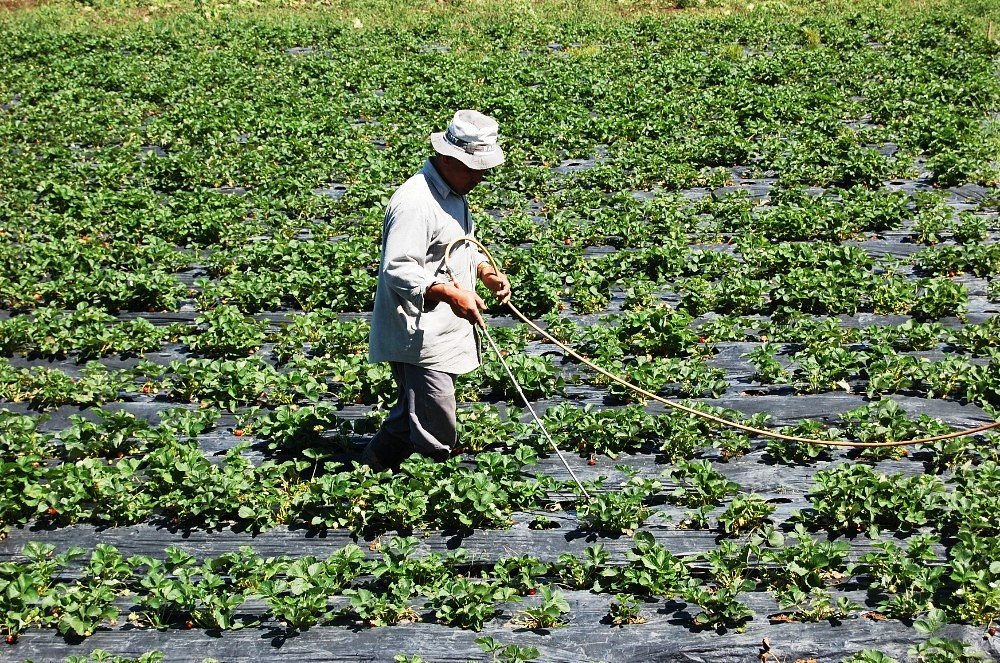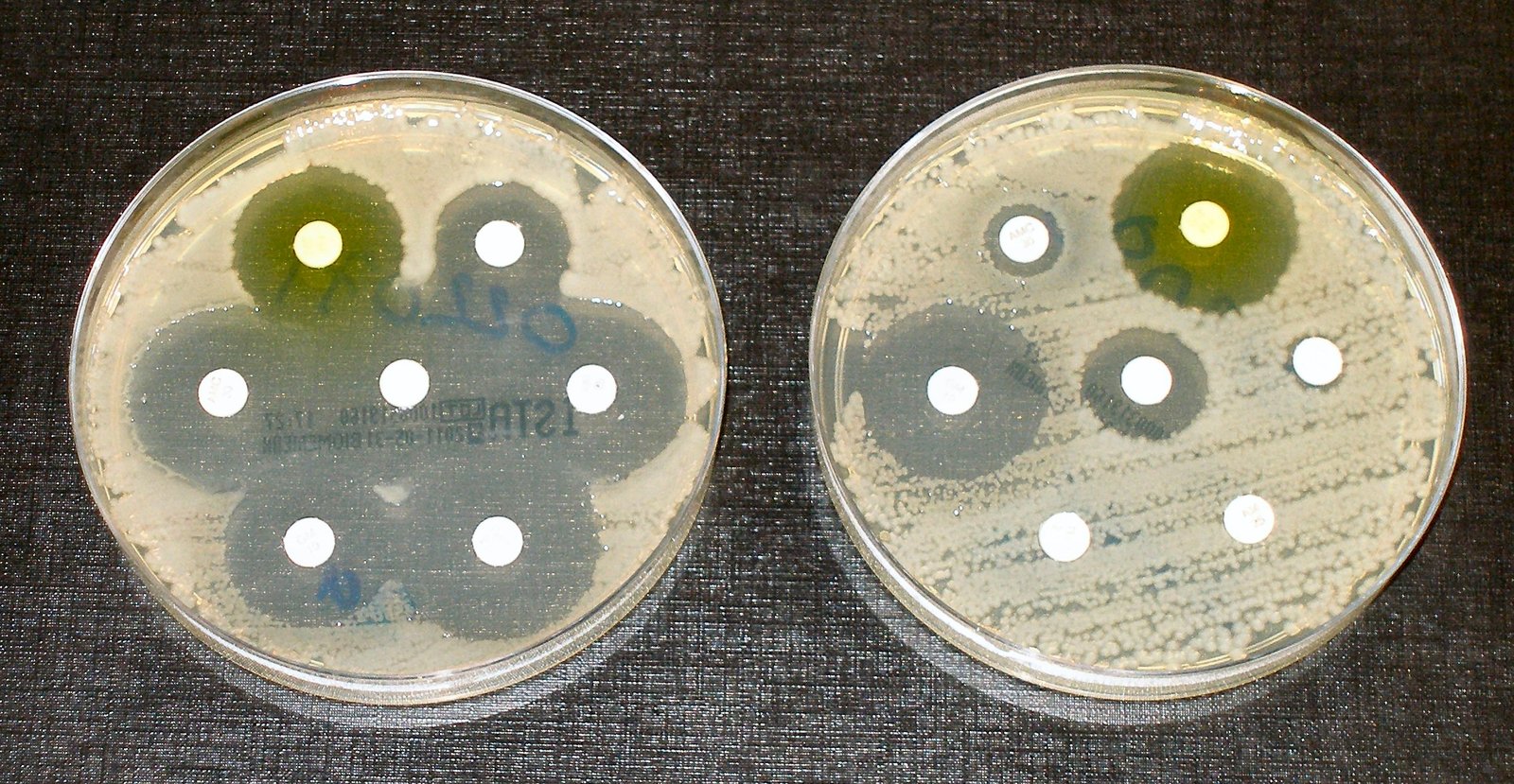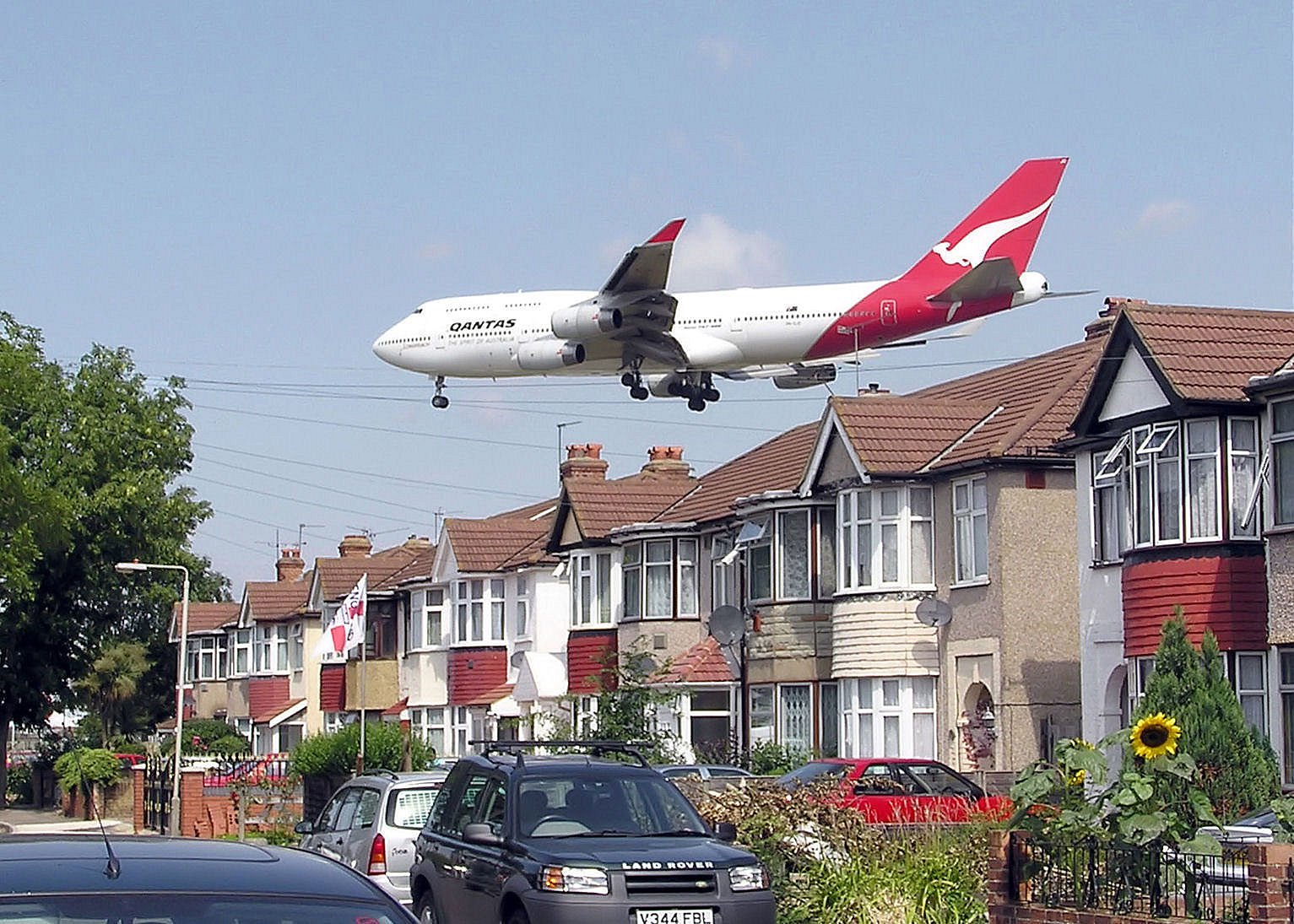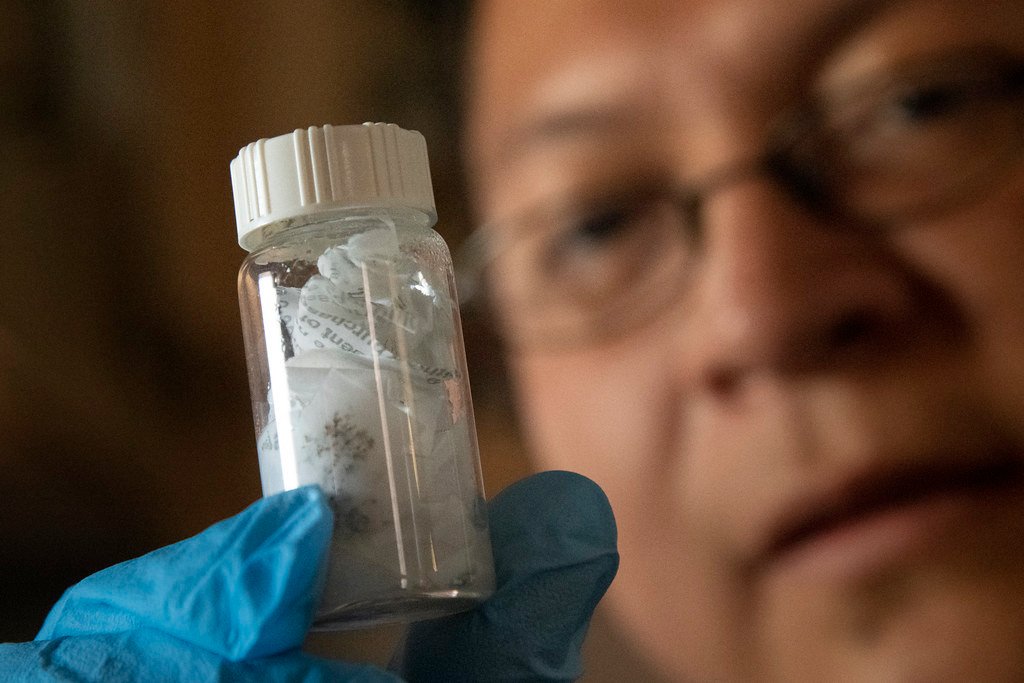We’ve all heard the saying “you are what you eat,” but what happens when what we eat fundamentally changes? For millions of years, nature’s food chains operated like perfectly orchestrated symphonies, with each species playing its part in an intricate dance of survival. Then humans arrived on the scene, and without even realizing it, we began rewriting the entire musical score.
The truth is, our species has become the most influential force on Earth’s food webs since the asteroid that wiped out the dinosaurs. But here’s the twist: most of these changes happened accidentally, as unintended consequences of our technological progress, agricultural innovations, and global expansion. From the depths of our oceans to the peaks of our mountains, we’ve unknowingly orchestrated a planetary transformation that’s still unfolding today.
The Accidental Invasion: How We Became Nature’s Ultimate Hitchhiker Service

Picture this: a zebra mussel the size of your fingernail hitches a ride across the Atlantic Ocean in a cargo ship’s ballast water. Within decades, these tiny stowaways have colonized entire lake systems, fundamentally altering aquatic food webs across North America. This scenario has played out thousands of times across our planet, making humans the most effective species-transportation system in Earth’s history.
Every day, approximately 90,000 merchant ships traverse our oceans, each one carrying an invisible cargo of marine life in their ballast tanks. When these ships discharge their ballast water in foreign ports, they’re essentially playing biological roulette with entire ecosystems. The Asian carp in the Great Lakes, the European starling blanketing North America, and the cane toad wreaking havoc in Australia – all passengers on humanity’s inadvertent wildlife express.
What makes this phenomenon particularly fascinating is how quickly these invasive species can climb the food chain ladder. Take the Nile perch, introduced to Lake Victoria in the 1950s as a fishing experiment. Within a few decades, this single species had consumed its way through hundreds of native fish species, completely restructuring one of Africa’s largest freshwater ecosystems.
The Plastic Plague: When Synthetic Becomes Sustenance

In 1907, when Leo Baekeland invented the first synthetic plastic, he probably never imagined that his creation would one day become a staple food source for marine life. Today, microscopic plastic particles have infiltrated every level of the ocean’s food web, from the tiniest plankton to the largest whales. This isn’t just pollution – it’s an entirely new food source that evolution never prepared life to handle.
Scientists have discovered that many marine organisms can’t distinguish between plastic debris and their natural prey. Sea turtles mistake plastic bags for jellyfish, seabirds feed plastic fragments to their chicks thinking they’re nutritious fish eggs, and filter-feeding organisms like mussels and oysters accumulate microplastics in their tissues. The result is a food chain where synthetic materials are being passed from prey to predator in an endless cycle.
The implications are staggering. Researchers have found plastic particles in the stomachs of creatures living in the deepest ocean trenches, places where sunlight has never touched. We’ve essentially created a new base layer in the marine food pyramid, one made entirely of human-made materials that will persist in the environment for hundreds of years.
Chemical Cocktails: The Invisible Ingredients We Never Intended to Serve

Rachel Carson’s “Silent Spring” opened the world’s eyes to a terrifying reality: the chemicals we spray on our crops don’t just disappear. They climb the food chain like invisible hitchhikers, accumulating in the tissues of animals far removed from agricultural fields. This process, called bioaccumulation, has turned apex predators into unwitting chemical storage units.
Consider the peregrine falcon, once on the brink of extinction due to DDT poisoning. The pesticide didn’t kill the birds directly; instead, it traveled from sprayed crops to insects, then to small birds, and finally to the falcons themselves. The accumulated chemicals caused their eggshells to become so thin that they broke under the weight of the incubating parent. An entire species nearly vanished because of chemicals designed to protect wheat fields.
Even today, decades after banning DDT in many countries, we continue to detect its presence in the tissues of polar bears, penguins, and deep-sea fish. These animals live thousands of miles from any agricultural activity, yet they carry the chemical signature of human farming practices. It’s a sobering reminder that in nature’s interconnected web, nothing truly stays local.
The Antibiotic Avalanche: Creating Superbugs in Our Food Supply

When Alexander Fleming discovered penicillin in 1928, he inadvertently set in motion one of the most dramatic changes to the microbial food web in Earth’s history. The widespread use of antibiotics in agriculture has created an invisible battlefield where bacteria fight for survival, leading to the emergence of antibiotic-resistant “superbugs” that now threaten the entire food chain.
Farmers routinely dose livestock with antibiotics not just to treat diseases, but to promote faster growth and prevent infections in crowded conditions. This practice has created perfect breeding grounds for resistant bacteria, which then spread through manure, groundwater, and direct contact with other animals. The result is a microbial arms race where bacteria evolve faster than we can develop new drugs.
The implications extend far beyond livestock. These resistant bacteria contaminate soil, water systems, and wild animal populations, creating a planetary network of antimicrobial resistance. Scientists have found antibiotic-resistant genes in everything from soil bacteria to the gut microbiomes of wild birds, demonstrating how our medical innovations have fundamentally altered the microscopic ecosystems that underpin all life on Earth.
Urban Heat Islands: Cooking the Food Chain from the Ground Up

Cities generate so much heat that they’ve become artificial climate zones, creating “urban heat islands” that can be 10 degrees warmer than surrounding rural areas. This seemingly minor temperature difference has cascading effects throughout urban food webs, favoring heat-tolerant species while driving away those adapted to cooler conditions. We’ve essentially created thousands of mini-climate zones around the world without meaning to.
The concrete and asphalt that define our urban landscapes absorb and radiate heat like massive storage batteries, creating microclimates that never existed in nature. These temperature changes favor certain insects, plants, and animals while putting others at a disadvantage. Urban-adapted species like pigeons, rats, and cockroaches thrive in these conditions, while temperature-sensitive species like native amphibians and certain bird species struggle to survive.
Perhaps most remarkably, some urban wildlife populations are evolving at an accelerated pace to adapt to these artificial environments. City-dwelling birds are changing their songs to communicate over traffic noise, urban plants are developing heat tolerance, and some insects are shifting their activity patterns to avoid the hottest parts of the day. We’re witnessing evolution in fast-forward, driven by the unintended thermal consequences of urban development.
Light Pollution: Disrupting Nature’s Ancient Rhythms

For billions of years, life on Earth evolved under the predictable rhythm of day and night. Then, in the span of just over a century, humans flooded the planet with artificial light, fundamentally disrupting the circadian rhythms that govern everything from plant photosynthesis to animal migration patterns. This seemingly benign innovation has created one of the most pervasive changes to natural food webs in modern times.
Nocturnal insects, drawn to artificial lights like moths to a flame, exhaust themselves circling streetlights instead of pollinating flowers or providing food for bats and spiders. This disruption ripples through entire ecosystems, affecting pollination rates, insect population dynamics, and the animals that depend on them for food. Scientists estimate that artificial lighting kills billions of insects each year, fundamentally altering the base of many food webs.
The effects extend to larger animals as well. Sea turtle hatchlings, programmed by millions of years of evolution to navigate toward the ocean using moonlight, become disoriented by beachfront lighting and crawl toward roads instead of water. Migratory birds crash into illuminated buildings in such numbers that cities have become literal dead zones along ancient flyways. We’ve essentially rewritten the navigation systems that countless species have relied upon for millennia.
The Nitrogen Bomb: Fertilizing Our Way to Ecological Chaos

The invention of synthetic fertilizers in the early 20th century promised to end world hunger, but it also unleashed an ecological transformation that continues to reshape food webs around the globe. The massive increase in nitrogen and phosphorus inputs to agricultural systems has created a cascade of unintended consequences that extend far beyond farm fields.
Excess fertilizers wash into rivers and lakes, creating algal blooms that consume oxygen and create dead zones where few marine animals can survive. The Gulf of Mexico’s dead zone, roughly the size of New Jersey, is largely attributed to fertilizer runoff from Midwest farms. These oxygen-depleted waters force marine life to relocate, fundamentally altering the distribution and abundance of species across vast ocean areas.
The effects aren’t limited to aquatic systems. Nitrogen deposition from agricultural runoff has changed the composition of forests, grasslands, and wetlands worldwide. Some plants thrive in nitrogen-rich environments while others struggle, leading to shifts in plant communities that reverberate through entire terrestrial food webs. We’ve essentially become the planet’s largest fertilizer distribution system, enriching some ecosystems while impoverishing others.
The Coral Collapse: How Carbon Dioxide Became an Ocean Acidifier

When we burn fossil fuels, we’re not just changing the atmosphere – we’re fundamentally altering ocean chemistry. The oceans absorb about 25% of the carbon dioxide we produce, forming carbonic acid that makes seawater more acidic. This process, called ocean acidification, is dissolving the very foundation of marine food webs: the calcium carbonate shells and skeletons that countless organisms depend upon.
Coral reefs, often called the rainforests of the sea, are particularly vulnerable to these chemical changes. As ocean acidity increases, corals struggle to build their calcium carbonate skeletons, leading to weakened reef structures and mass bleaching events. The collapse of coral reefs eliminates habitat for approximately 25% of all marine species, creating a domino effect that reshapes entire ocean ecosystems.
The impacts extend far beyond coral reefs. Shellfish, sea urchins, and many microscopic organisms that form the base of marine food webs are finding it increasingly difficult to build their protective shells. Some species are adapting by developing thinner shells or changing their behavior, while others are declining in numbers. We’re witnessing a fundamental restructuring of ocean ecosystems driven by the chemical byproducts of our industrial civilization.
Pharmaceutical Pollution: Medicating the Environment

Every pill we take eventually makes its way into the environment, creating an unintended pharmaceutical cocktail in water systems worldwide. From antibiotics to hormones to antidepressants, these medications are altering the behavior and physiology of wildlife in ways we’re only beginning to understand. We’ve essentially turned the entire planet into a low-dose pharmacy.
Fish exposed to antidepressants in wastewater become more aggressive and less cautious around predators. Frogs exposed to hormones from birth control pills experience reproductive abnormalities. Birds consuming invertebrates contaminated with anti-anxiety medications show altered migration patterns and reduced fear responses. These subtle changes in behavior and physiology can have profound effects on predator-prey relationships and ecosystem dynamics.
The most concerning aspect of pharmaceutical pollution is its persistence and pervasiveness. These compounds are designed to be biologically active at low concentrations, meaning even tiny amounts can have significant effects on wildlife. As our global population ages and medication use increases, we’re conducting a massive, uncontrolled experiment on the planet’s ecosystems.
The Microplastic Menu: Rewriting Marine Nutrition

Microplastics have become so ubiquitous in marine environments that they’re now considered a new food group for ocean life. These tiny fragments, smaller than a grain of rice, are consumed by everything from microscopic zooplankton to massive whales, fundamentally altering the nutritional landscape of marine ecosystems.
The problem isn’t just that animals are eating plastic – it’s that plastic consumption affects their ability to obtain proper nutrition. Seabirds with stomachs full of plastic fragments feel full but receive no nutritional value, leading to malnutrition and death. Marine mammals pass microplastics to their offspring through milk, introducing synthetic materials into the food web before young animals have even begun to hunt for themselves.
Perhaps most alarming is the discovery that microplastics can transport other pollutants through the food web. These tiny particles act like sponges, absorbing toxic chemicals from the surrounding water and concentrating them in animal tissues. We’ve essentially created a delivery system for environmental toxins that bypasses all of nature’s evolved defense mechanisms.
Climate Migration: Reshuffling the Deck of Life

Climate change is forcing species to migrate toward cooler regions, creating entirely new ecological communities that have never existed before. As temperatures rise, cold-adapted species move toward the poles while heat-tolerant species expand their ranges, resulting in novel ecosystem combinations that evolution never had time to fine-tune.
In the Arctic, southern species are moving northward and encountering Arctic specialists that have no experience with these new competitors or predators. Red foxes are expanding into Arctic fox territory, killer whales are venturing into ice-free Arctic waters previously dominated by polar bears, and temperate fish species are colonizing Arctic seas. These new ecological relationships are creating unpredictable food web dynamics.
The speed of these changes is unprecedented in Earth’s history. Species are being forced to adapt or relocate faster than they can evolve, leading to ecological mismatches where predators and prey are no longer synchronized. Migrating birds arrive at breeding grounds before their insect prey has emerged, and flowering plants bloom before their pollinators have awakened from hibernation.
The Noise Pollution Factor: Disrupting Nature’s Communication Networks

The constant hum of human activity has created a sonic environment that interferes with how animals communicate, hunt, and navigate. From ship engines disrupting whale songs to highway noise masking bird calls, we’ve fundamentally altered the acoustic landscape that countless species depend upon for survival.
Marine mammals, which rely on sound for everything from navigation to finding mates, are particularly affected by underwater noise pollution. Shipping traffic, oil exploration, and military sonar create a cacophony that can mask whale communications across ocean basins. Some whale populations have had to change their calling patterns, singing louder or at different frequencies to be heard over human-generated noise.
The effects extend to terrestrial ecosystems as well. Traffic noise affects bird communication, leading to changes in mating patterns and territorial behavior. Insects that rely on acoustic signals for finding mates struggle to communicate in noisy environments, potentially affecting reproduction rates and population dynamics. We’ve essentially created an acoustic fog that interferes with the communication networks that bind ecosystems together.
Electronic Waste: Heavy Metals in the Food Web

The rapid pace of technological innovation has created a new category of environmental pollutant: electronic waste containing heavy metals like lead, mercury, and cadmium. These toxic elements accumulate in organisms and biomagnify up the food chain, reaching dangerous concentrations in top predators. Our digital revolution has inadvertently poisoned the very ecosystems we depend upon.
When electronic devices are improperly disposed of, they release heavy metals into soil and water systems. These metals are then absorbed by plants and consumed by herbivores, beginning a journey up the food chain that concentrates toxins at each level. Predatory birds, fish, and mammals can accumulate metal concentrations thousands of times higher than those found in their environment.
The global nature of electronic waste makes this problem particularly challenging. Devices manufactured in one country, used in another, and disposed of in a third create pollution pathways that span continents. Heavy metals released from e-waste in developing countries can eventually find their way into the tissues of wildlife in remote locations, demonstrating how our technological lifestyle has global ecological consequences.
The Artificial Light Feeding Frenzy: Changing Who Eats What When

Artificial lighting has created new feeding opportunities for some species while eliminating them for others, fundamentally altering the timing and efficiency of predator-prey interactions. Nocturnal hunters that rely on darkness for cover find themselves exposed under streetlights, while some species have learned to exploit artificial lighting to their advantage.
Bats that hunt insects around streetlights can feed more efficiently than those in dark areas, leading to local population booms near artificial light sources. However, this apparent benefit comes with costs – these well-lit hunting grounds also expose bats to increased predation from owls and other aerial predators. The result is a complex reshuffling of predator-prey dynamics that plays out differently in each illuminated ecosystem.
Some species have shown remarkable adaptability to artificial lighting. Urban spiders build webs near streetlights to catch insects attracted to the light, while some birds have learned to hunt at night under artificial illumination. However, these adaptations create new competitive pressures and ecological relationships that didn’t exist in pre-industrial ecosystems.
The Hormonal Disruption Highway: Chemicals That Confuse Biology

Endocrine-disrupting chemicals from plastics, pesticides, and industrial processes have created a hormonal confusion that affects reproduction, development, and behavior throughout the food web. These substances mimic or interfere with natural hormones, causing everything from feminized male fish to altered mating behaviors in birds.
The effects are particularly pronounced in aquatic environments, where endocrine disruptors concentrate in sediments and bioaccumulate in food webs. Male fish exposed to these chemicals can develop female characteristics, while female fish may experience reduced fertility or altered maternal behavior. These reproductive disruptions can cascade through entire populations, affecting predator-prey relationships and ecosystem stability.
Perhaps most concerning is the discovery that endocrine disruption can have multigenerational effects. Animals exposed to these chemicals can pass along altered gene expression to their offspring, creating lasting changes in populations long after the initial exposure. We’re witnessing evolutionary changes happening in real-time, driven by synthetic chemicals that interfere with the most fundamental biological processes.
The Concrete Jungle Effect: Habitat Fragmentation’s Hidden Consequences

The sprawling network of roads, cities, and agricultural fields has fragmented natural habitats into isolated islands, forcing animals to travel through hostile environments to find food, mates, and shelter. This habitat fragmentation has created new selective pressures that favor certain species while disadvantaging others, fundamentally altering the composition of ecological communities.
Small, isolated habitat patches can’t support the same diversity of species as large, connected ecosystems. Large predators and animals with extensive home ranges are the first to disappear, leading to cascading effects throughout the food web. Without top predators to control their populations, herbivores may overconsume vegetation, while smaller predators may experience population booms that affect their prey species.
The edges of fragmented habitats create unique microclimates that favor different species than the interior areas. These “edge effects” can penetrate hundreds of meters into forest fragments, fundamentally altering the species composition and ecological processes within remaining habitat patches. We’ve essentially created a mosaic of novel ecological conditions that evolution never prepared life to handle.
The Warming Waters: Thermal Barriers in Marine Food Webs

Rising ocean temperatures are creating thermal barriers that prevent some species from accessing their traditional feeding grounds while opening new areas to others. Cold-water species are being compressed into smaller polar regions, while warm-water species expand their ranges, creating novel ecological communities with unpredictable dynamics.
The effects are particularly dramatic in polar regions, where warming is happening fastest. Arctic cod, a crucial food source for seals, whales, and seabirds, is being displaced by temperate fish species that can’t survive in the extremely cold conditions that Arctic predators are adapted to. This dietary shift is forcing Arctic predators to expend more energy to obtain less nutritious prey, affecting their survival and reproduction.
Coral reefs, already stressed by ocean acidification, are experiencing more frequent and severe bleaching events as water temperatures rise. These thermal stress events can kill entire reef systems, eliminating habitat for thousands of species and disrupting food webs that support coastal communities around the world. The warming oceans are essentially reshuffling the deck of marine life, creating new winners and losers in the struggle for survival.
Conclusion: The Unintended Architects of Change

We stand at a remarkable moment in Earth’s history, where a single species – us – has become the dominant force shaping life on our planet. The six ways we’ve changed the food chain represent just the beginning of a transformation that will continue for generations to come. From the microscopic bacteria in our soil to the largest whales in our oceans, every living thing now exists in a world fundamentally altered by human activity.
The most sobering aspect of this transformation is how little we intended it. Each of these changes began as solutions to human problems – transportation, agriculture, medicine, technology – yet they’ve created a cascade of ecological consequences that we’re still struggling to understand. We’ve become the unintended architects of a new Earth, one where the rules of ecology are being rewritten in real-time.
Yet within this challenge lies an opportunity. By understanding how we’ve changed the food chain, we can begin to make more conscious choices about our impact on the natural world. The same ingenuity that created these unintended consequences can be channeled toward solutions that work with nature rather than against it. The question isn’t whether we’ll continue to influence Earth’s food webs – it’s whether we’ll do so deliberately and wisely.
As we move forward, we must remember that we’re not separate from nature’s food web – we’re part of it. Every choice we make, from the food we eat to the energy we use, ripples through the interconnected systems that sustain life on Earth. The future of our planet’s food chains depends not on our ability to control nature




